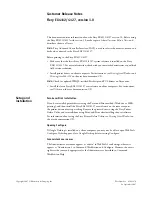Reviews:
No comments
Related manuals for PowerEdge M640

610
Brand: IBM Pages: 40

ZX1
Brand: Z Microsystems Pages: 17

Legacy 4127
Brand: Xerox Pages: 8

SIMip
Brand: TAPKO Pages: 2

IB-NAS4210-B
Brand: RaidSonic Pages: 2

iPlanet Web Server
Brand: Sun Microsystems Pages: 62

1870N - HL B/W Laser Printer
Brand: Brother Pages: 204

6047R
Brand: Supero Pages: 112

XDAAI1PK
Brand: Sony Pages: 8

BSV-M1 - StorStation NAS Server
Brand: Sony Pages: 58

Freeway 2000
Brand: Simpact Pages: 86

XT nano
Brand: EVS Pages: 70

AcquiLite A7810
Brand: Obvius Pages: 29

G4-10G-010-96T
Brand: Viavi Pages: 12

NAP7000D
Brand: Measurement Computing Pages: 56

EPS1
Brand: Lantronix Pages: 74

PowerEdge R840
Brand: Dell EMC Pages: 60

Applause Media System
Brand: GILBARCO VEEDER-ROOT Pages: 102

















